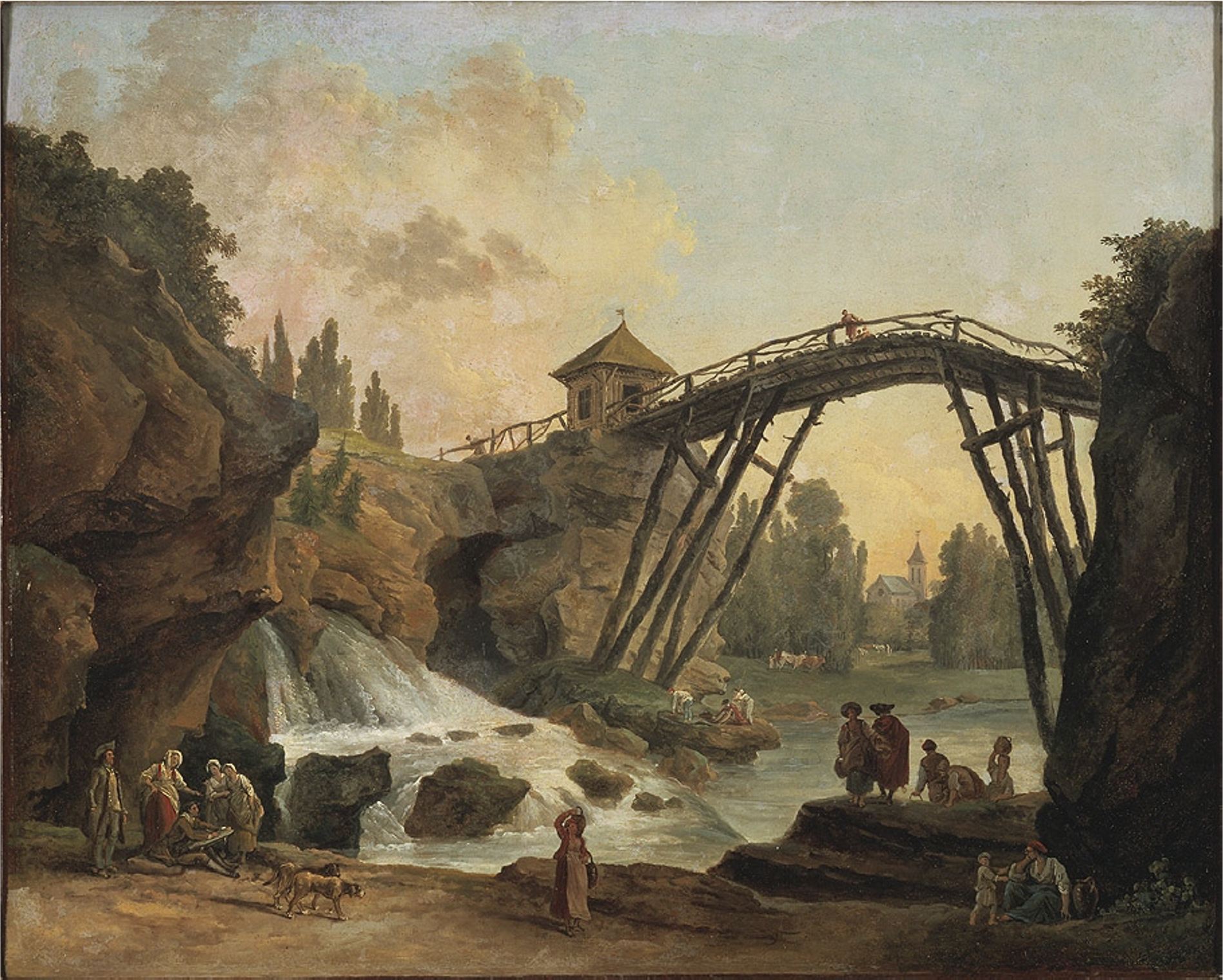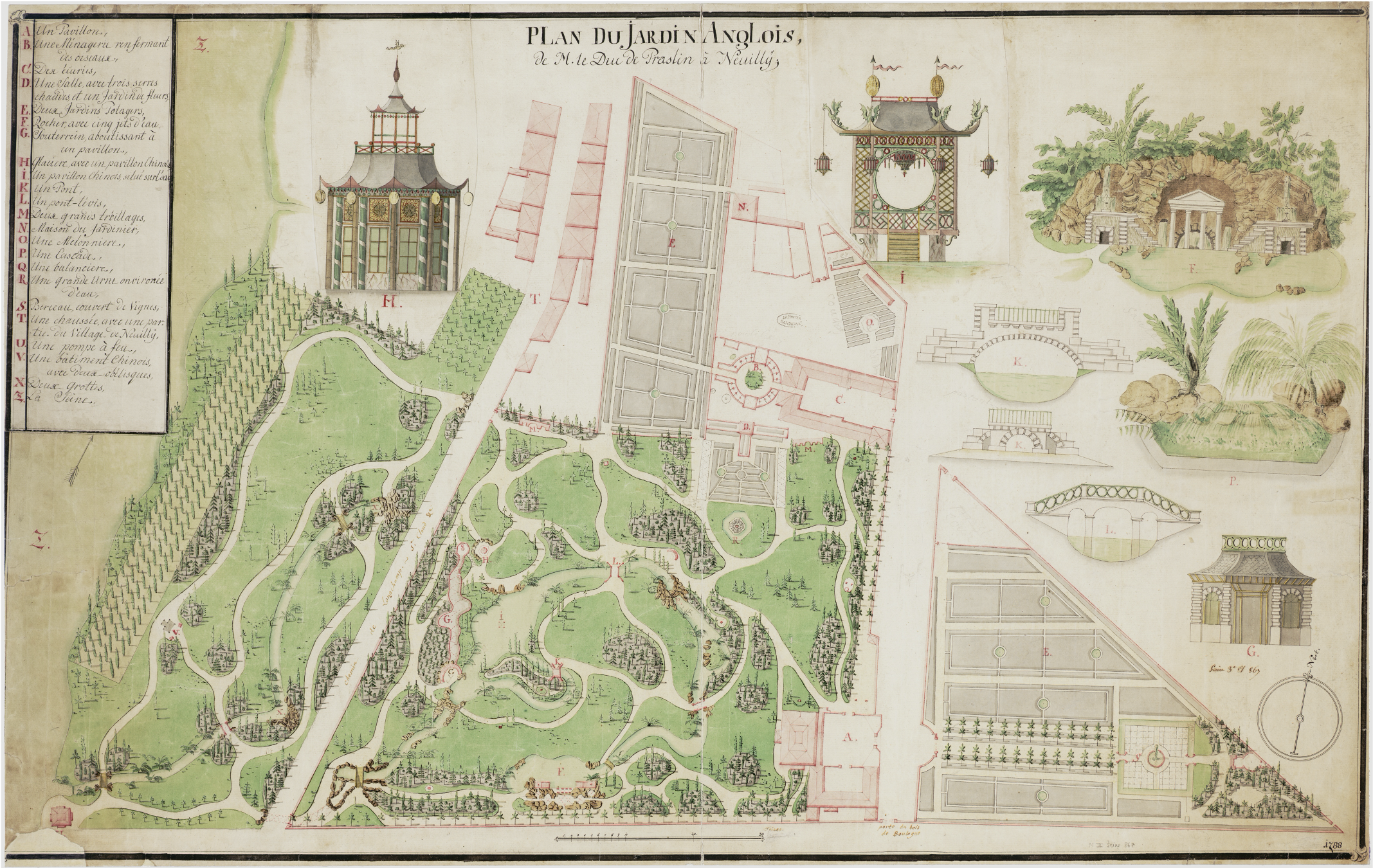
Hubert Robert
Draughtsman Drawing the Wooden Bridge in the Park of Méréville
oil on canevas
65 × 81 cm
18th century
Nationalmuseum, Stockolm

Unknown draftsman
Map of the garden of the Folie Saint-James in Neuilly
1/420 scale
60 × 95 cm
1788
Archives Nationales